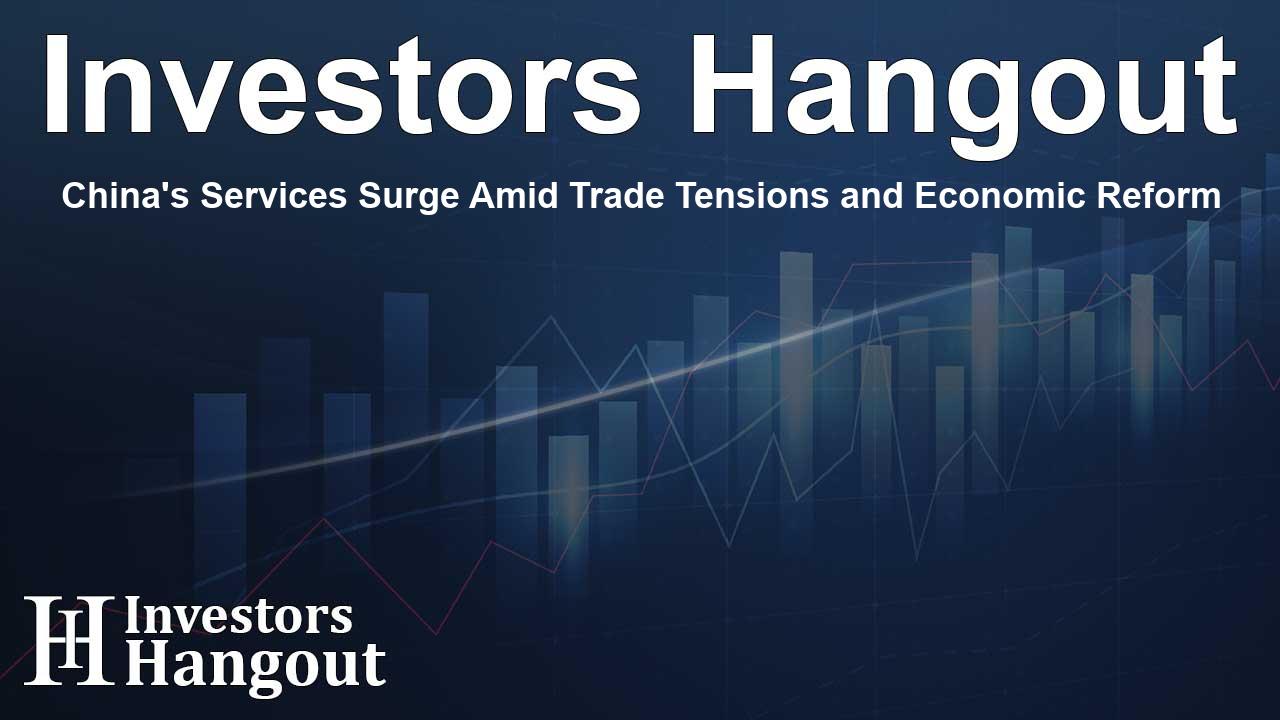China's Services Surge Amid Trade Tensions and Economic Reform

China's Thriving Services Sector Amid Challenging Trade Dynamics
China's services activity has recently demonstrated remarkable resilience, reaching a seven-month high, signifying a significant uplift in domestic demand. This development brings a blend of optimism and caution as international trade challenges loom large over the nation's economic landscape.
Caixin PMI Data Highlights Strong Growth
The Caixin/S&P Global services purchasing managers' index (PMI) revealed an increase to 52.2 in December, up from 51.5 the previous month. This positive trajectory reflects robust demand within the domestic market and indicates that the services sector is actively contributing to economic recovery.
Comparison With National Findings
These findings align closely with China's official PMI data, which also marked a recovery in non-manufacturing activity to 52.2 from November's 50.0. This synchronization highlights a broader trend of revitalization within the services sector, which plays a crucial role in driving economic stability.
Challenges Persisting in the Economic Environment
Government Responses to Economic Strain
In response to these economic hurdles, Chinese authorities have introduced various fiscal and monetary measures aiming to invigorate the economy. Since September, a combination of existing policies and new incentives has contributed to a more positive market environment, according to Wang Zhe, Senior Economist at Caixin Insight Group.
Examining Business Confidence and Employment Trends
The new business sub-index also saw an increase, rising to 52.7 in December from 51.8 the prior month, indicating that domestic businesses are expanding. However, the survey uncovered a decline in new business inflows from abroad, marking the first drop since mid-2023. This dip underlines the increasing challenges faced by companies operating on an international scale.
Employment Cuts Amidst Cost Concerns
Interestingly, companies have started reducing their workforce for the first time in four months due to rising costs associated with input materials and wages. This trend raises questions about future hiring and the sustainability of recent growth in the services sector.
Looking Ahead: Policy Preparations and Trade Outlook
Wang Zhe emphasized the need for proactive policy measures, anticipating that the external environment will become increasingly intricate in the coming year. The expectation of heightened international trade tensions necessitates timely actions to navigate potential disruptions effectively.
Trade Tensions with the United States
The resurgence of Donald Trump as U.S. president has intensified worries over future tariffs, which could exceed 60% on Chinese goods. Such measures pose significant risks to China's economy and have led to growing concerns among businesses regarding international competitiveness and market stability.
Composite PMI Trends and Market Sentiment
The overall impact on the composite PMI, which encompasses both manufacturing and services sectors, fell to 51.4 in December from 52.3, suggesting a cautious outlook as businesses remain wary over the approaching economic challenges. Despite the generally positive sentiment within the domestic services sector, the collective apprehension highlights the balancing act that companies must perform in navigating these tumultuous times.
Frequently Asked Questions
What is the current state of China's services sector?
China's services sector is experiencing significant growth, reaching a seven-month high in performance largely due to increased domestic demand.
How does the latest Caixin PMI reflect the economy?
The Caixin PMI rose to 52.2 in December, indicating expansion in the services sector compared to previous months, showcasing recovery trends.
What challenges are impacting China's economy?
Challenges include weak consumption, the real estate crisis, and potential international trade disruptions linked to U.S. tariffs.
What steps is the government taking to address economic issues?
The Chinese government has implemented a series of fiscal and monetary policies aimed at revitalizing the economy and boosting market confidence.
What are the implications of U.S.-China trade tensions?
Increased tariffs from the U.S. could severely impact China's exports, raising concerns among businesses about competitiveness and future growth prospects.
About Investors Hangout
Investors Hangout is a leading online stock forum for financial discussion and learning, offering a wide range of free tools and resources. It draws in traders of all levels, who exchange market knowledge, investigate trading tactics, and keep an eye on industry developments in real time. Featuring financial articles, stock message boards, quotes, charts, company profiles, and live news updates. Through cooperative learning and a wealth of informational resources, it helps users from novices creating their first portfolios to experts honing their techniques. Join Investors Hangout today: https://investorshangout.com/
Disclaimer: The content of this article is solely for general informational purposes only; it does not represent legal, financial, or investment advice. Investors Hangout does not offer financial advice; the author is not a licensed financial advisor. Consult a qualified advisor before making any financial or investment decisions based on this article. The author's interpretation of publicly available data shapes the opinions presented here; as a result, they should not be taken as advice to purchase, sell, or hold any securities mentioned or any other investments. The author does not guarantee the accuracy, completeness, or timeliness of any material, providing it "as is." Information and market conditions may change; past performance is not indicative of future outcomes. If any of the material offered here is inaccurate, please contact us for corrections.